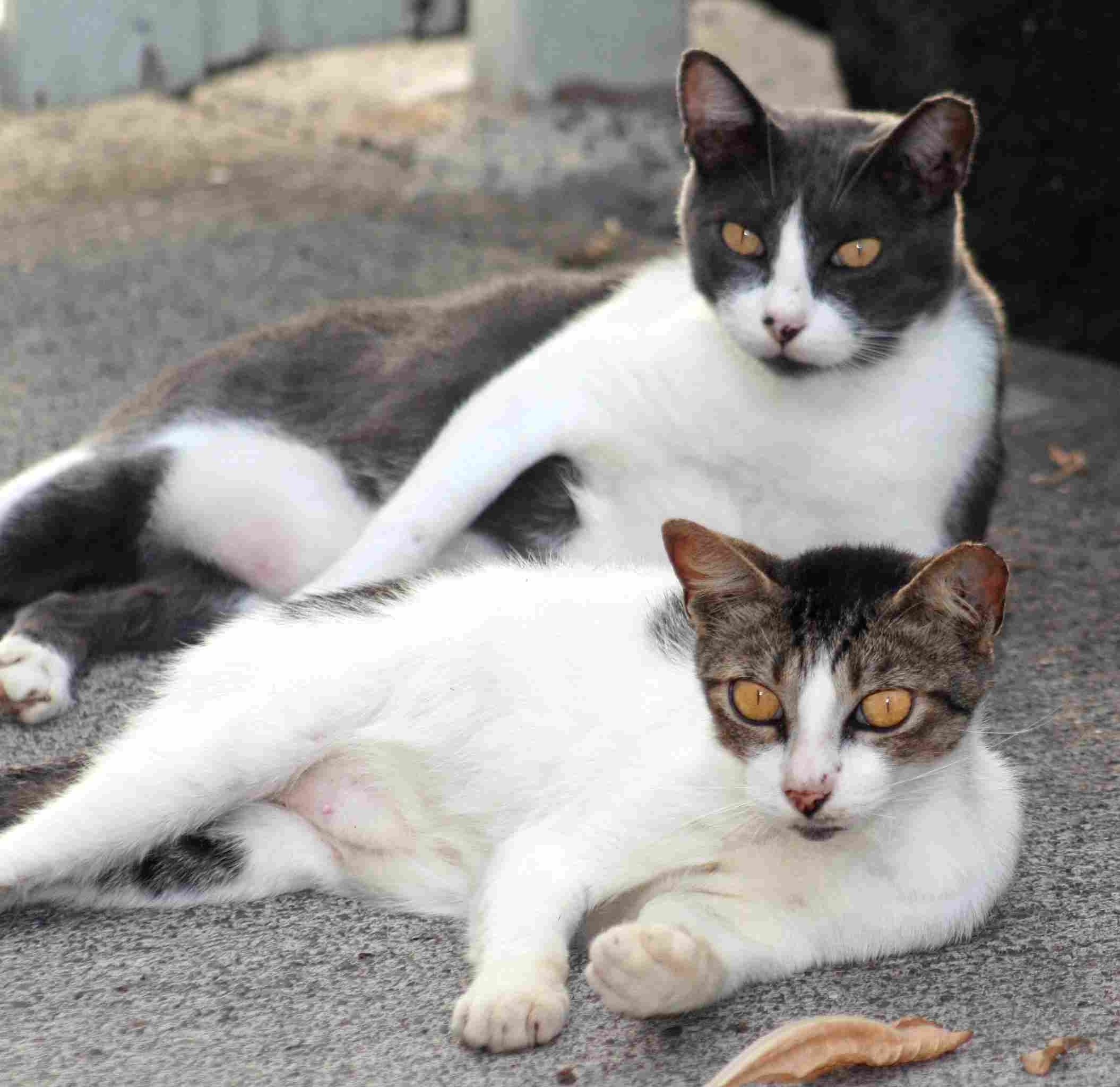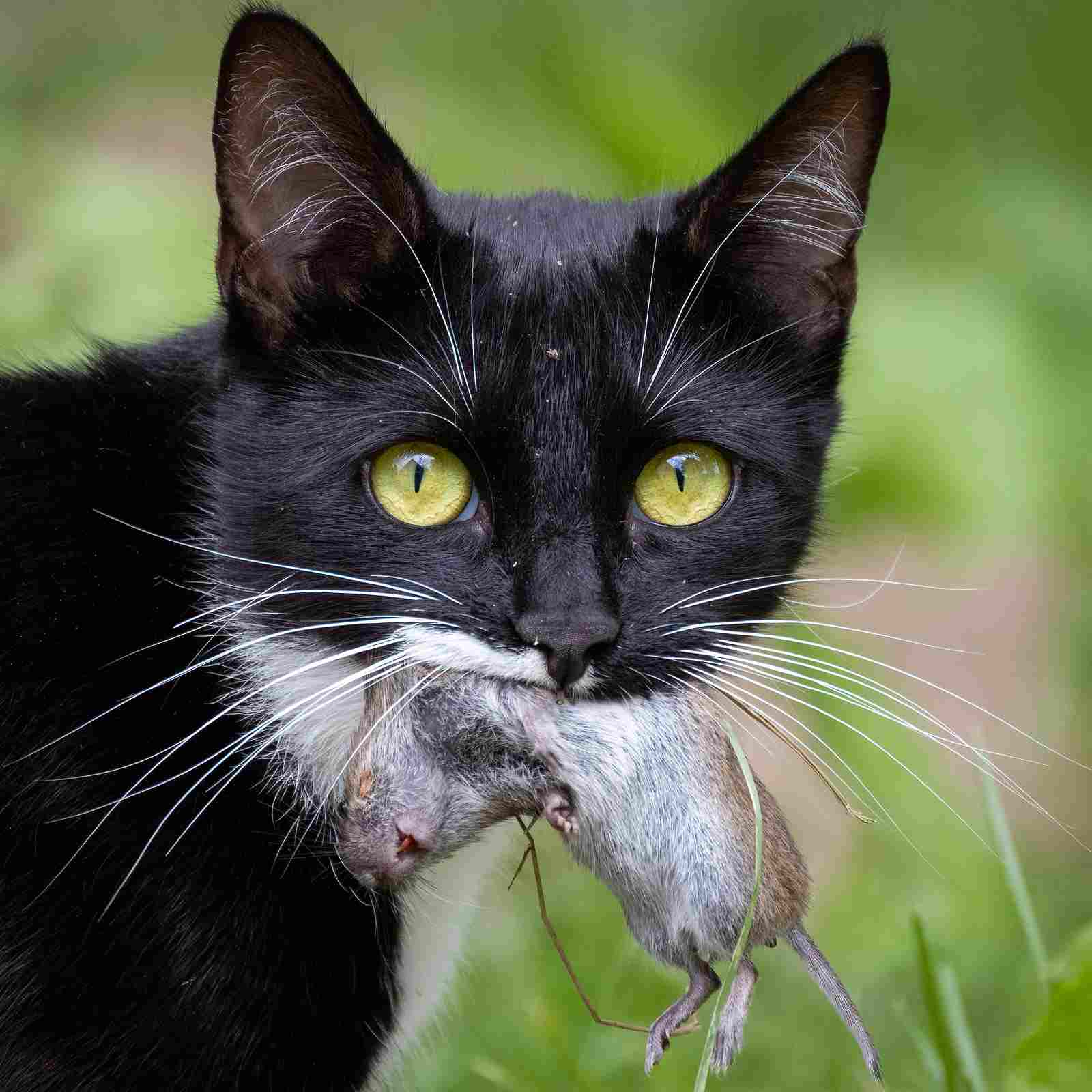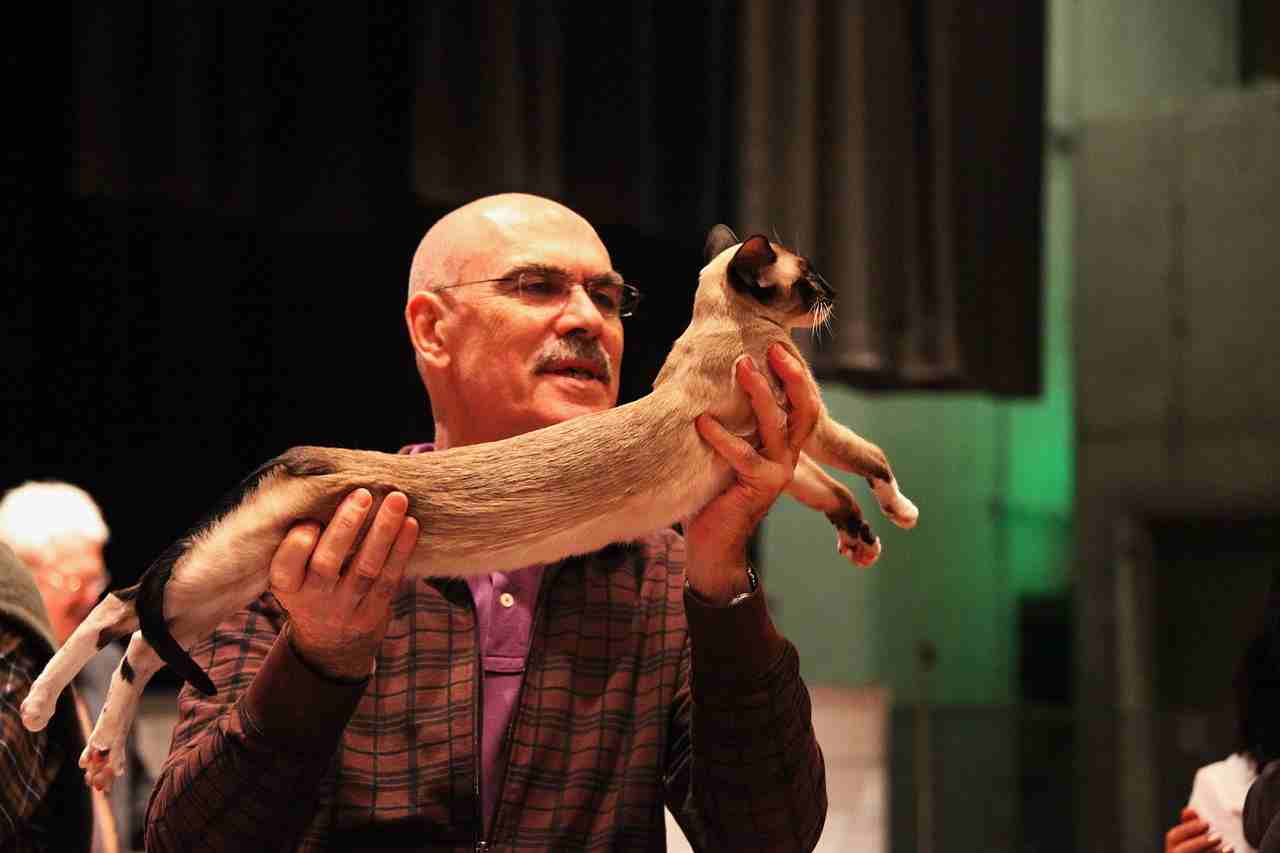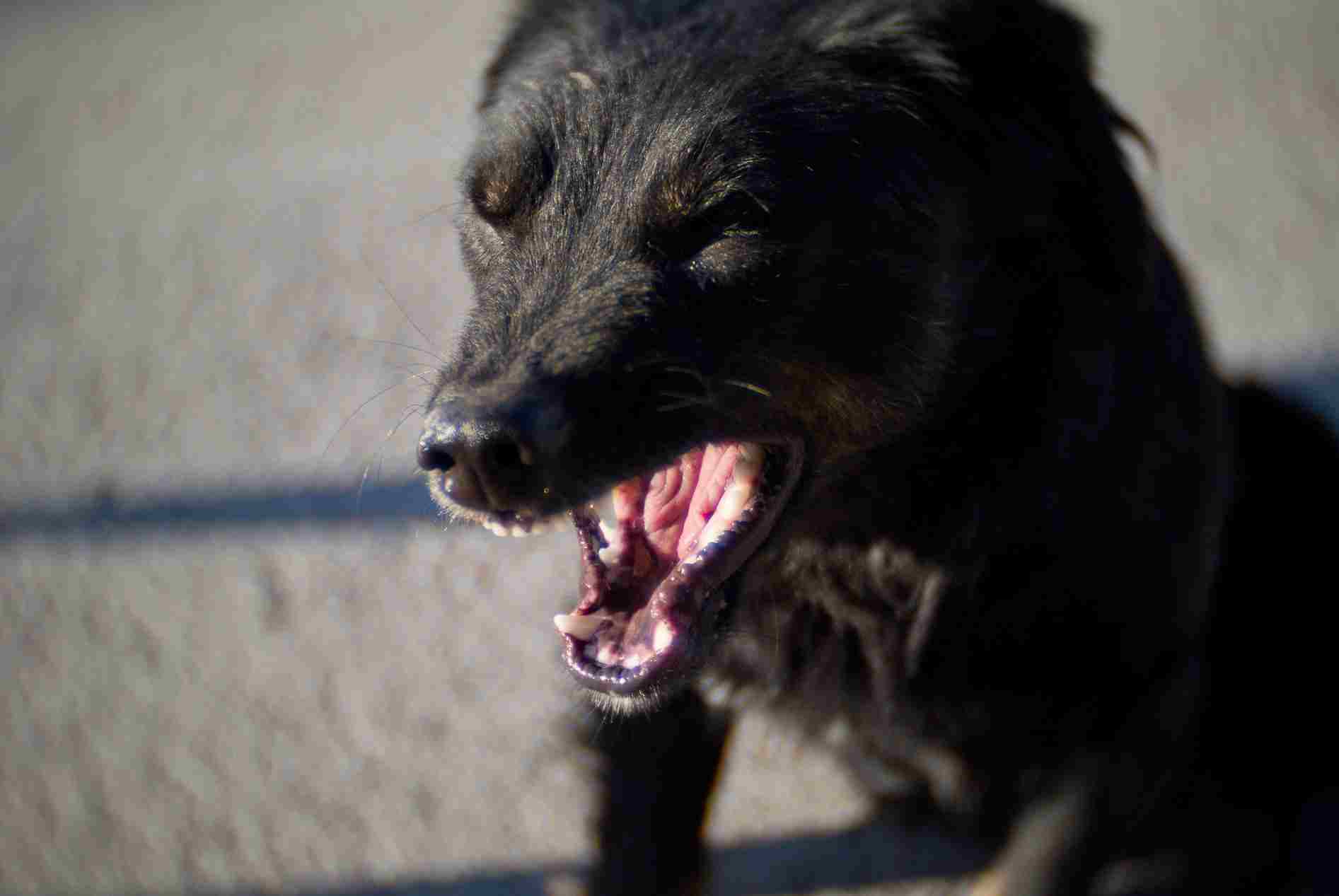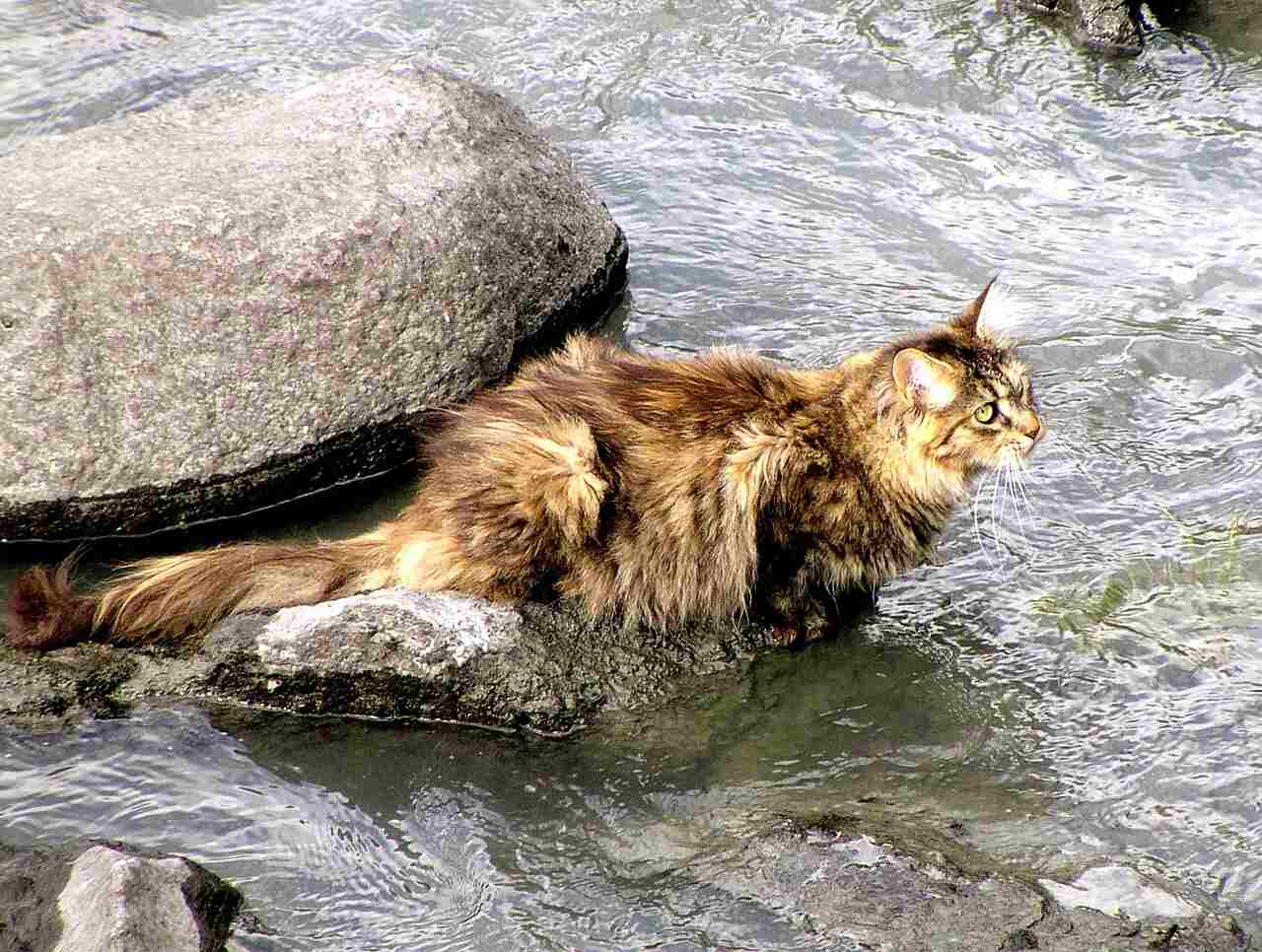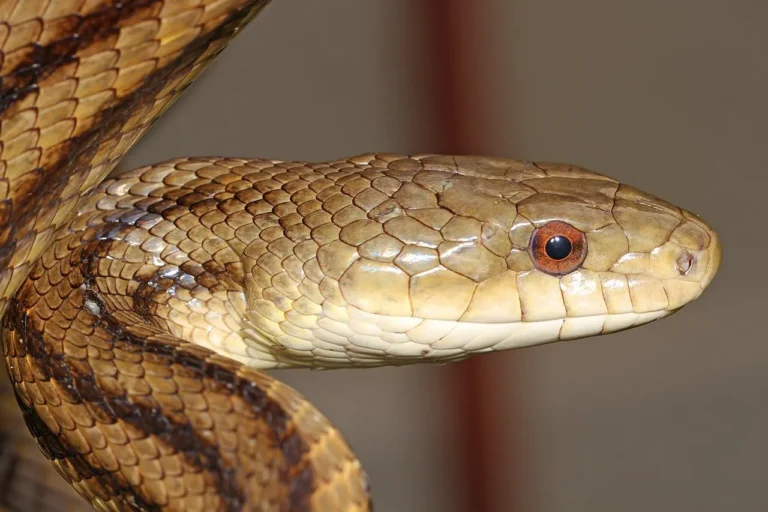Bobcat Vs Cat Size, Weight, Overall Comparison
In a hypothetical confrontation between a bobcat and a domestic cat, we examine their characteristics to speculate on the potential outcome of a one-on-one clash. This analysis takes into account their taxonomy, appearance, size, weight, aggressiveness, and predatory features.
Bobcat vs Domestic Cat: Assessing the Likely Victor in a Confrontation
In a theoretical showdown between a bobcat and a domestic cat, the bobcat is likely to emerge as the victor due to its larger size, greater weight, heightened aggressiveness, and more predatory nature.
I). Size and Weight:
– Bobcats, being larger and heavier than domestic cats, possess a significant physical advantage. The size disparity alone gives the bobcat an edge, making it more capable of overpowering the smaller domestic cat in a physical altercation.
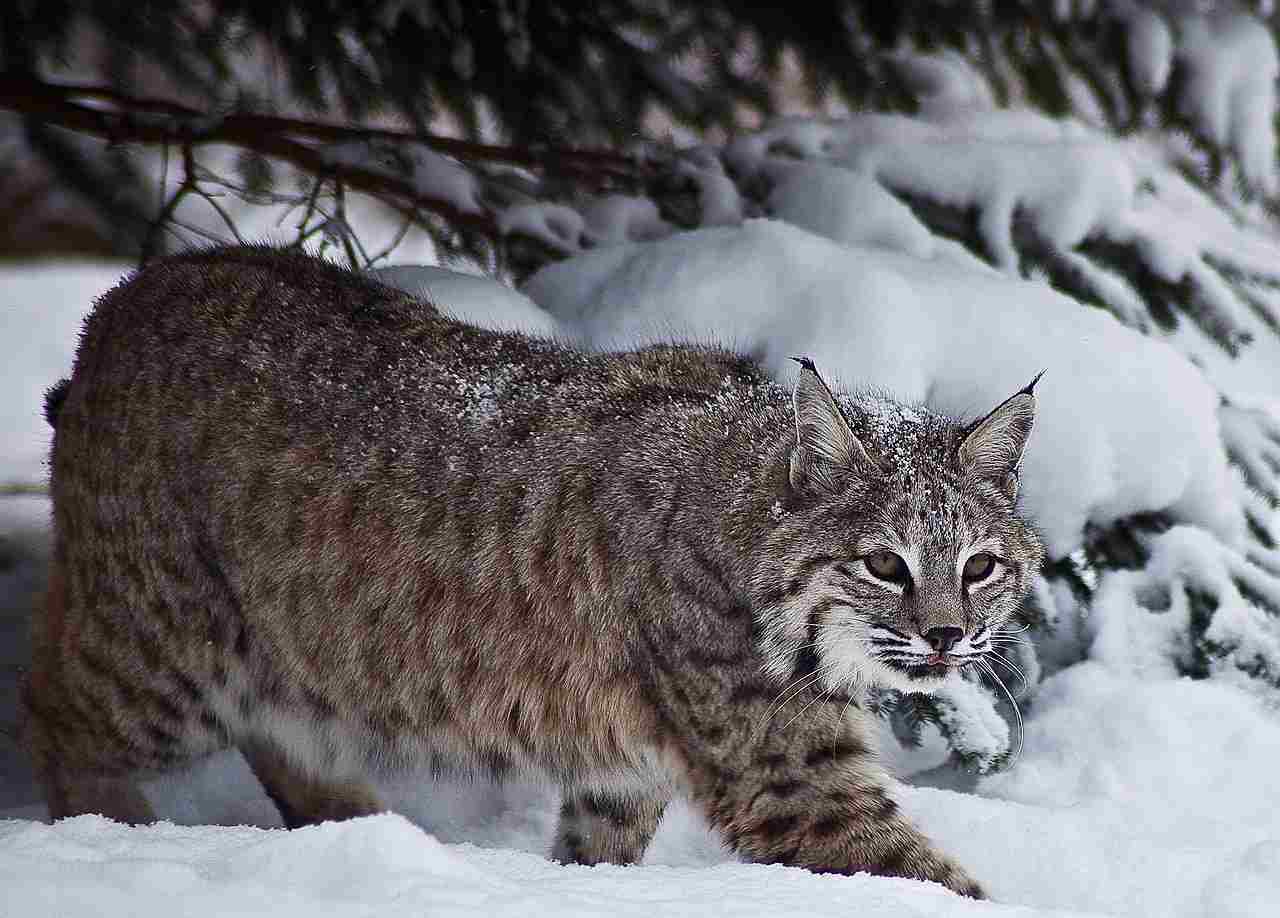
II). Aggressiveness:
– Bobcats are known for their aggression, especially in territorial disputes or confrontations. This heightened aggressiveness provides the bobcat with the initiative to control the encounter and assert dominance over the domestic cat.
III). Predatory Nature:
– Bobcats exhibit strong predatory instincts, as they are skilled hunters of small mammals and birds. This predatory nature gives the bobcat a distinct advantage in a confrontation, as it is more accustomed to engaging in predatory behavior compared to a domestic cat.
IV). Overall Verdict:
– In a one-on-one fight, the bobcat is anticipated to prevail over the domestic cat. The bobcat’s larger size, greater weight, heightened aggressiveness, and more predatory nature collectively position it as the more formidable opponent. While domestic cats may have defensive instincts, the overall traits of the bobcat provide it with a decisive advantage in a potential confrontation.
*Details of Comparison
| Criteria | Bobcat | Domestic Cat |
| Taxonomy | Lynx rufus | Felis catus |
| Appearance | Robust, tufted ears, spotted coat |
Diverse appearances based on selective breeding
|
| Size | Generally larger (26-41 inches) | Varies by breed |
| Weight | Heavier (15-35 pounds) | Varies by breed |
| Bite Force | Stronger, adapted for larger prey |
Lesser, tailored for smaller prey
|
| Physical Offensive Advantages | Specialized for hunting larger prey |
Varied offensive adaptations
|
| Physical Defensive Advantages | Relies on natural camouflage, agility |
Shares defensive strategies like climbing
|
| Speed | Higher top speed (25-30 mph) |
Varies by breed, generally lower
|
| Agility | Highly agile, adapted for natural environments |
Exhibits agility, varies by individual
|
| Overall Physical Capacity | More balanced and powerful |
Varies based on breed characteristics
|
| Habitat Preference(s) | Adaptable to various habitats |
Adaptable to human-inhabited areas
|
| Tracks | Larger, distinctive with retractable claws |
Smaller with visible claw marks
|
| Lifespan | Shorter (7-10 years in the wild) |
Longer, varies by breed (12-15 years or more)
|
| Mode of Feeding | Hunts live prey |
Consumes commercially prepared food
|
| Social Behavior | Generally solitary |
Exhibits a range of social behaviors
|
| Mode of Reproduction | Mates through courtship, gives birth to live young |
Similar reproductive process, varies by breed
|
| Parental Behavior | Females raise young alone, involved in offspring’s development |
Varies, some are attentive parents
|
| Proximity to Human-Inhabited Areas | Typically avoids human settlements |
Adapted to live in close proximity to humans
|
| Behavior Toward Humans | Usually elusive, may become aggressive if cornered |
Varied, seeks human companionship
|
| Danger Posed to Humans | Generally avoids, may pose a threat if provoked |
Minimal danger, occasional scratches or bites
|
| Associated Precautions | Avoid approaching, secure trash bins |
Routine veterinary care, provide a safe environment
|
| Conservation Status | Generally “Least Concern” |
Not formally classified, abundant due to domestication
|
Key Points:
Similarities:
-
- Belong to the family Felidae, sharing a carnivorous diet and similar modes of reproduction.
- Exhibit defensive strategies such as climbing to evade threats.
Differences:
-
- Varying taxonomy, appearances, sizes, and weights.
- Bobcats have a stronger bite force and specialized adaptations for hunting larger prey.
- Domestic cats are adapted to human-inhabited areas, exhibiting a diverse impact on local wildlife.
- Bobcats have a more balanced and powerful overall physical capacity, while domestic cats vary based on breed characteristics.
- Bobcats exhibit parental involvement, while domestic cat parenting behavior varies.
- Bobcats are generally more wary of humans, while domestic cats often seek human companionship.
- Precautions for bobcats focus on minimizing interactions, while those for domestic cats involve responsible pet ownership.
- Bobcats are monitored for conservation, while domestic cats, as a domesticated species, do not have a specific conservation status.
1. Taxonomy:
Bobcat (Lynx rufus):
Kingdom: Animalia
Phylum: Chordata
Class: Mammalia
Order: Carnivora
Family: Felidae
Genus: Lynx
Species: L. rufus
Domestic Cat (Felis catus):
Kingdom: Animalia
Phylum: Chordata
Class: Mammalia
Order: Carnivora
Family: Felidae
Genus: Felis
Species: F. catus
2. Appearance:
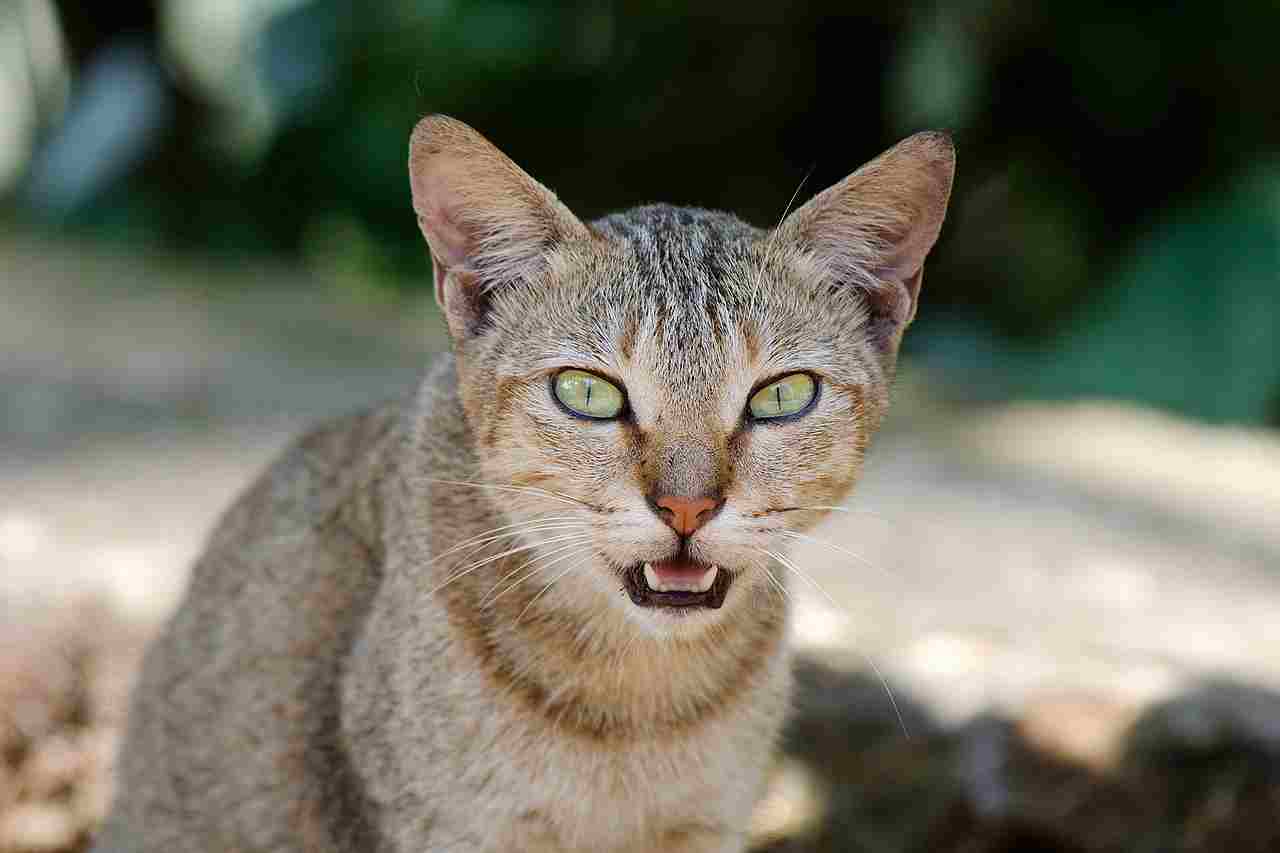
Bobcat:
Robust body, tufted ears, and a short tail.
Coat color varies but commonly includes a reddish-brown hue with distinct black spots.
Domestic Cat:
Varied coat colors and patterns, with a slender body, pointed ears, and a long tail.
Diverse appearances due to selective breeding for different breeds.
Comparison: Bobcats exhibit a wild, rugged appearance, while domestic cats showcase a broader range of appearances influenced by selective breeding.
Ecological Implications: The distinct appearances aid in species identification and adaptation to their respective environments, influencing camouflage and communication within their ecosystems.
3. Size:
Bobcat:
Generally smaller than most big cats, with an average length of 26 to 41 inches (66 to 104 cm).
Domestic Cat:
Varies widely in size based on breed, typically ranging from 18 to 20 inches (46 to 51 cm) in length.
Comparison: Bobcats are larger than domestic cats on average, but there’s substantial size variation among domestic cat breeds.
Ecological Implications: Size differences impact their roles in ecosystems, with bobcats as mid-sized predators and domestic cats filling various niches based on size and breed characteristics.
4. Weight:
Bobcat:
Weighs between 15 to 35 pounds (7 to 16 kg) on average.
Domestic Cat:
Weights vary greatly by breed, typically between 5 to 20 pounds (2 to 9 kg).
Comparison: Bobcats are generally heavier than domestic cats, but larger cat breeds can approach bobcat weights.
Ecological Implications: Weight influences hunting strategies, prey selection, and overall ecological impact, shaping their roles within their respective ecosystems.
5. Bite Force:
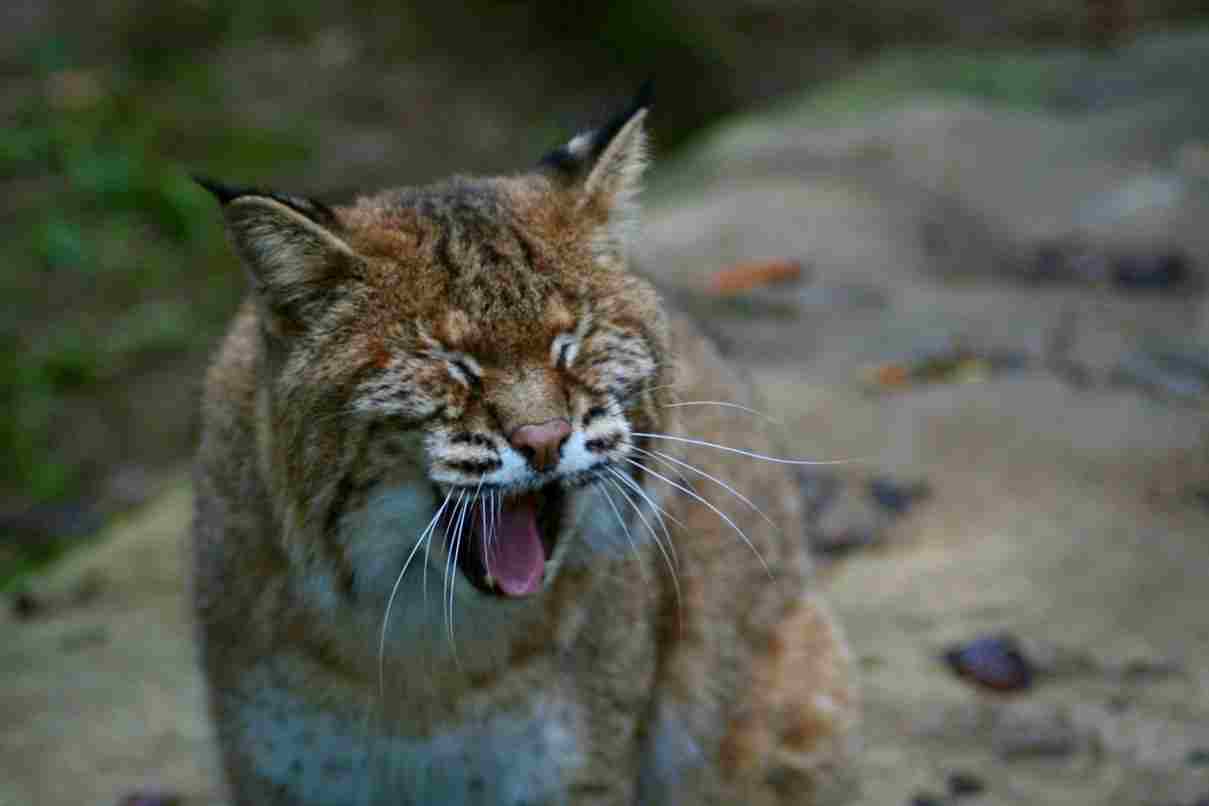
Bobcat:
Strong bite force, adapted for hunting and subduing prey.
Domestic Cat:
Lesser bite force compared to wild counterparts, tailored to a diet of smaller prey.
Comparison: Bobcats possess a more powerful bite force, crucial for capturing and handling diverse prey in the wild.
Ecological Implications: Bite force directly correlates with hunting capabilities, influencing the prey species each cat can efficiently capture and consume in its environment.
6. Physical Offensive Advantages:
Bobcat:
Sharp retractable claws and a powerful bite contribute to efficient prey capture.
Domestic Cat:
Varied offensive adaptations, including sharp claws and teeth, depending on breed.
Comparison: While both have sharp claws and teeth, the bobcat’s adaptations are more specialized for hunting larger prey in the wild.
Ecological Implications: The physical offensive advantages of bobcats are crucial for their role as predators in maintaining ecological balance, while domestic cats often employ similar features for hunting smaller prey in diverse environments.
7. Physical Defensive Advantages:
Bobcat:
Agile and capable of climbing trees to escape predators.
Camouflage and stealth aid in avoiding confrontations.
Domestic Cat:
Quick reflexes and the ability to climb to evade threats.
Comparison: Both bobcats and domestic cats share defensive strategies, such as climbing, but bobcats rely more on their natural camouflage and agility.
Ecological Implications: These defensive advantages contribute to the survival of both species in their respective environments, enabling them to escape danger and avoid conflicts.
8. Speed:
Bobcat:
Can reach speeds of 25 to 30 mph (40 to 48 km/h).
Domestic Cat:
Speed varies by breed but typically can reach 20 mph (32 km/h) or more.
Comparison: Bobcats generally have a higher top speed compared to most domestic cat breeds.
Ecological Implications: Speed is crucial for catching prey and escaping predators, shaping their roles in their ecosystems.
9. Agility:
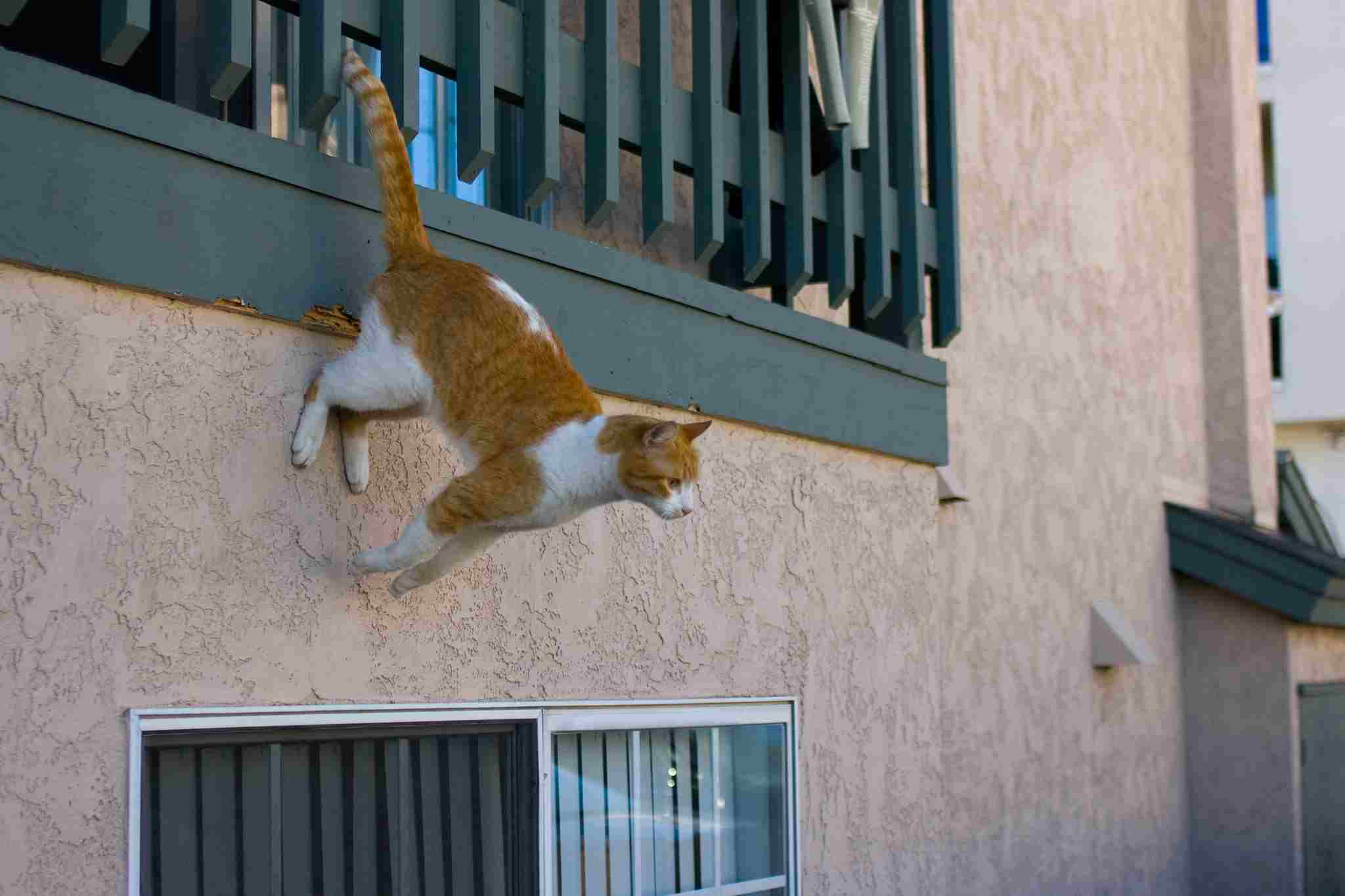
Bobcat:
Highly agile, able to navigate through varied terrain with ease.
Domestic Cat:
Exhibits agility, often seen in graceful movements and precise jumps.
Comparison: Both bobcats and domestic cats display impressive agility, with bobcats adapted for navigating natural environments.
Ecological Implications: Agility is essential for hunting, evading predators, and navigating diverse landscapes, contributing to their ecological roles.
10. Overall Physical Capacity:
Bobcat:
Robust physique with a well-adapted combination of strength, speed, and agility.
Domestic Cat:
Varied physical capacities based on breed characteristics, ranging from agile to more sedentary.
Comparison: Bobcats generally have a more balanced and powerful overall physical capacity tailored for a wild, predatory lifestyle.
Ecological Implications: The physical capacities of bobcats contribute to their effectiveness as mid-sized predators in ecosystems, while domestic cats exhibit diverse physical traits based on selective breeding for various purposes.
11. Habitat Preference(s):
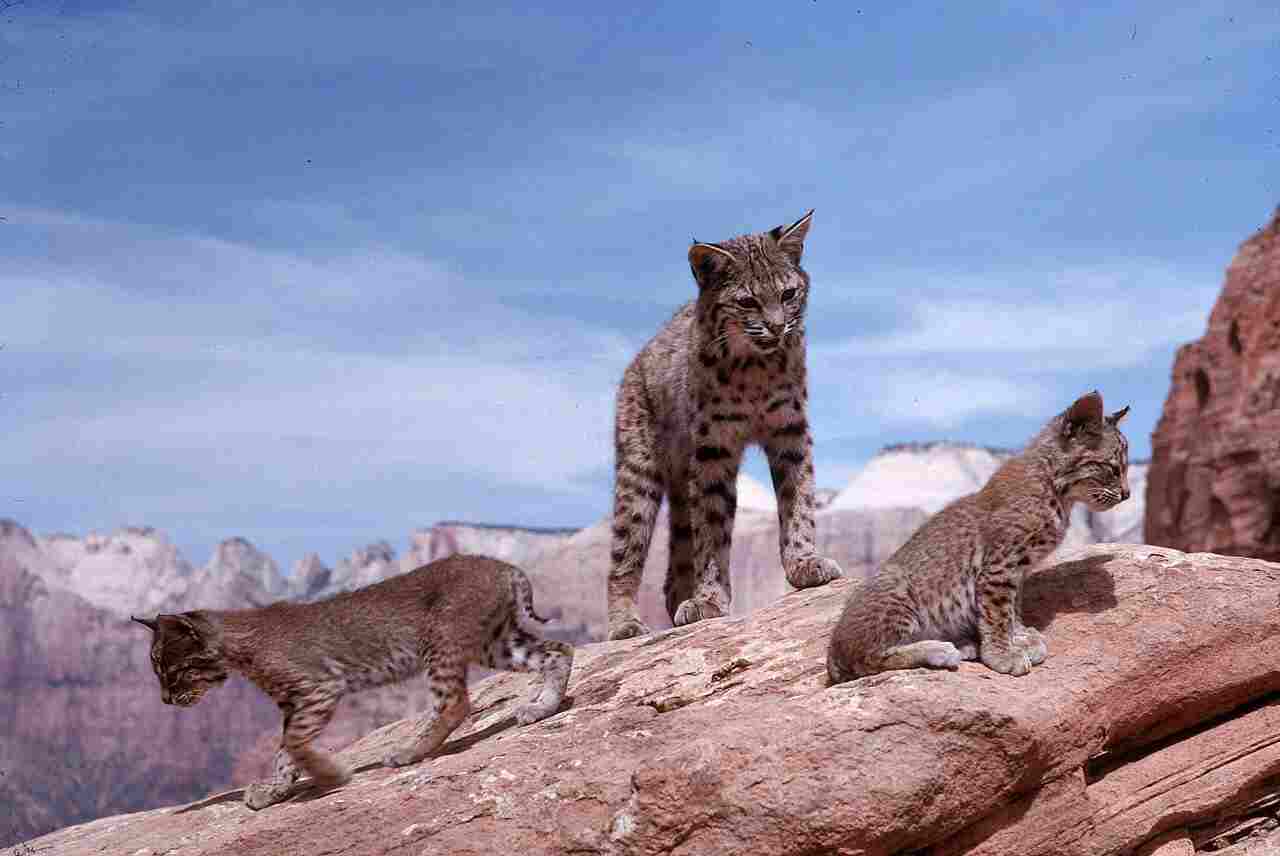
Bobcat:
Adaptable to a range of habitats, including forests, deserts, and swamps.
Domestic Cat:
Domesticated and comfortable in human-inhabited areas, but adaptable to diverse environments.
Comparison: Bobcats exhibit a wider range of habitat preferences, while domestic cats have successfully adapted to coexist with humans.
Ecological Implications: Bobcats’ habitat adaptability contributes to their ecological role as versatile predators, while domestic cats demonstrate adaptability to urban and suburban environments.
12. Tracks:
Bobcat:
Distinctive tracks with retractable claws visible, usually smaller than those of larger big cats.
Domestic Cat:
Smaller tracks with visible claw marks, often showing variations based on breed.
Comparison: Bobcat tracks share similarities with domestic cat tracks but are generally larger.
Ecological Implications: Track identification aids in tracking species in the wild, providing insights into their presence and behavior within ecosystems.
13. Lifespan:
Bobcat:
Typically lives 7 to 10 years in the wild, but longer in captivity.
Domestic Cat:
Lifespan varies by breed, with many living 12 to 15 years or more.
Comparison: Domestic cats generally have longer lifespans, partly attributed to controlled environments and veterinary care.
Ecological Implications: Lifespan influences population dynamics and ecological interactions, with domestic cats potentially having a more significant impact due to longer lifespans in certain environments.
14. Mode of Feeding:
Bobcat:
Carnivorous diet, preying on small to medium-sized mammals, birds, and occasionally larger prey.
Domestic Cat:
Carnivorous, primarily fed commercial cat food or a mix of meat, ensuring nutritional balance.
Comparison: Both species share a carnivorous diet, but bobcats rely on hunting for live prey, while domestic cats often consume commercially prepared food.
Ecological Implications: Bobcats play a crucial role in controlling small mammal populations in their ecosystems through predation, while domestic cats impact ecosystems differently due to their reliance on human-provided food.
15. Social Behavior:
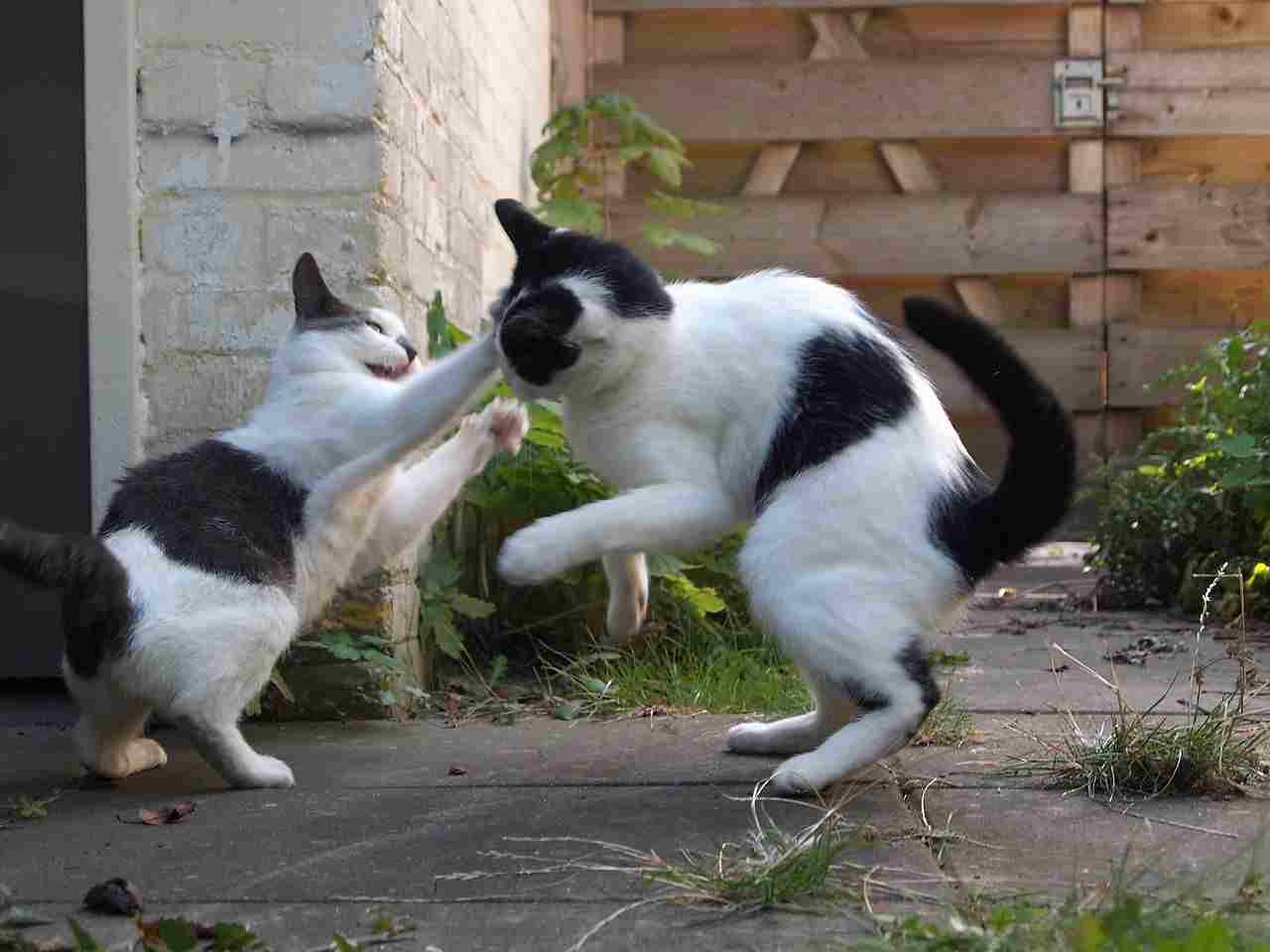
Bobcat:
Generally solitary, except during mating season or when raising young.
Domestic Cat:
Displays a range of social behaviors, from solitary to more sociable depending on individual temperament and breed.
Comparison: Bobcats are predominantly solitary, while domestic cats exhibit a broader spectrum of social behaviors.
Ecological Implications: Social behavior influences how these species interact with others in their environment, impacting territory dynamics and resource sharing.
16. Mode of Reproduction:
Bobcat:
Mates through courtship and gives birth to a litter of kittens.
Domestic Cat:
Similar reproductive process, with variations based on breed.
Comparison: Both species share a similar mode of reproduction, with female cats giving birth to live young.
Ecological Implications: Reproductive strategies influence population dynamics and play a role in maintaining the balance of their respective ecosystems.
17. Parental Behavior:
Bobcat:
Females raise their young alone, providing protection and teaching essential hunting skills.
Domestic Cat:
Varies by individual and breed, with some cats being attentive parents while others are more independent.
Comparison: Bobcat mothers are typically more involved in raising their offspring, while domestic cat parenting behavior varies.
Ecological Implications: Parental behavior affects the survival and development of young, impacting the overall population dynamics within their ecosystems.
18. Proximity to Human-Inhabited Areas:
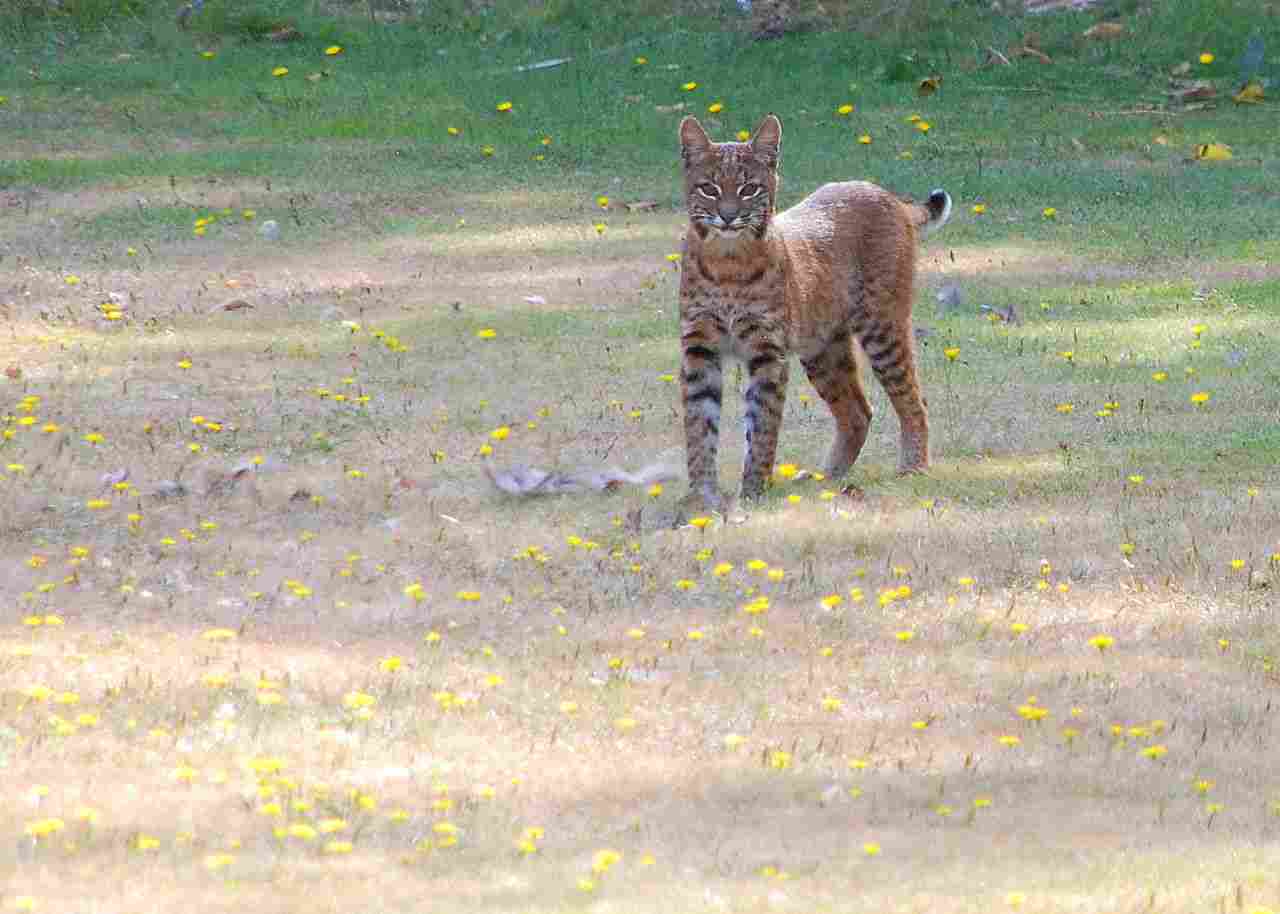
Bobcat:
Typically avoids human settlements but may venture into suburban areas in search of prey.
Domestic Cat:
Adapted to living in close proximity to humans, often kept as pets.
Comparison: Bobcats generally maintain a distance from human settlements, whereas domestic cats have adapted to coexist with humans.
Ecological Implications: This behavior influences the interaction and potential conflicts between wildlife and domesticated species in shared environments.
19. Behavior Toward Humans:
Bobcat:
Usually elusive and avoids contact with humans; may become aggressive if cornered.
Domestic Cat:
Exhibits a range of behaviors, from affectionate to independent, depending on individual temperament.
Comparison: Bobcats are typically more wary of humans, while domestic cats often seek human companionship.
Ecological Implications: Wild species’ wariness towards humans is a natural defense mechanism, while domestic cats’ behavior is shaped by their long association with humans.
20. Danger Posed to Humans:
Bobcat:
Generally avoids humans but may pose a threat if cornered or protecting young.
Domestic Cat:
Typically poses minimal danger to humans, with occasional scratches or bites.
Comparison: Bobcats may present a danger if provoked, while domestic cats are generally not considered threatening to humans.
Ecological Implications: Understanding potential risks from wildlife helps in promoting coexistence and minimizing conflicts in shared environments.
21. Associated Precautions:
Bobcat:
Avoid approaching or cornering; give them space to retreat.
Secure trash bins to deter scavenging in suburban areas.
Domestic Cat:
Routine veterinary care, including vaccinations.
Provide a safe environment to prevent accidents or injuries.
Comparison: Precautions for bobcats focus on minimizing interactions, while those for domestic cats involve responsible pet ownership.
Ecological Implications: Promoting responsible behaviors around wildlife and pets contributes to the well-being of both species and their coexistence in shared habitats.
22. Conservation Status:
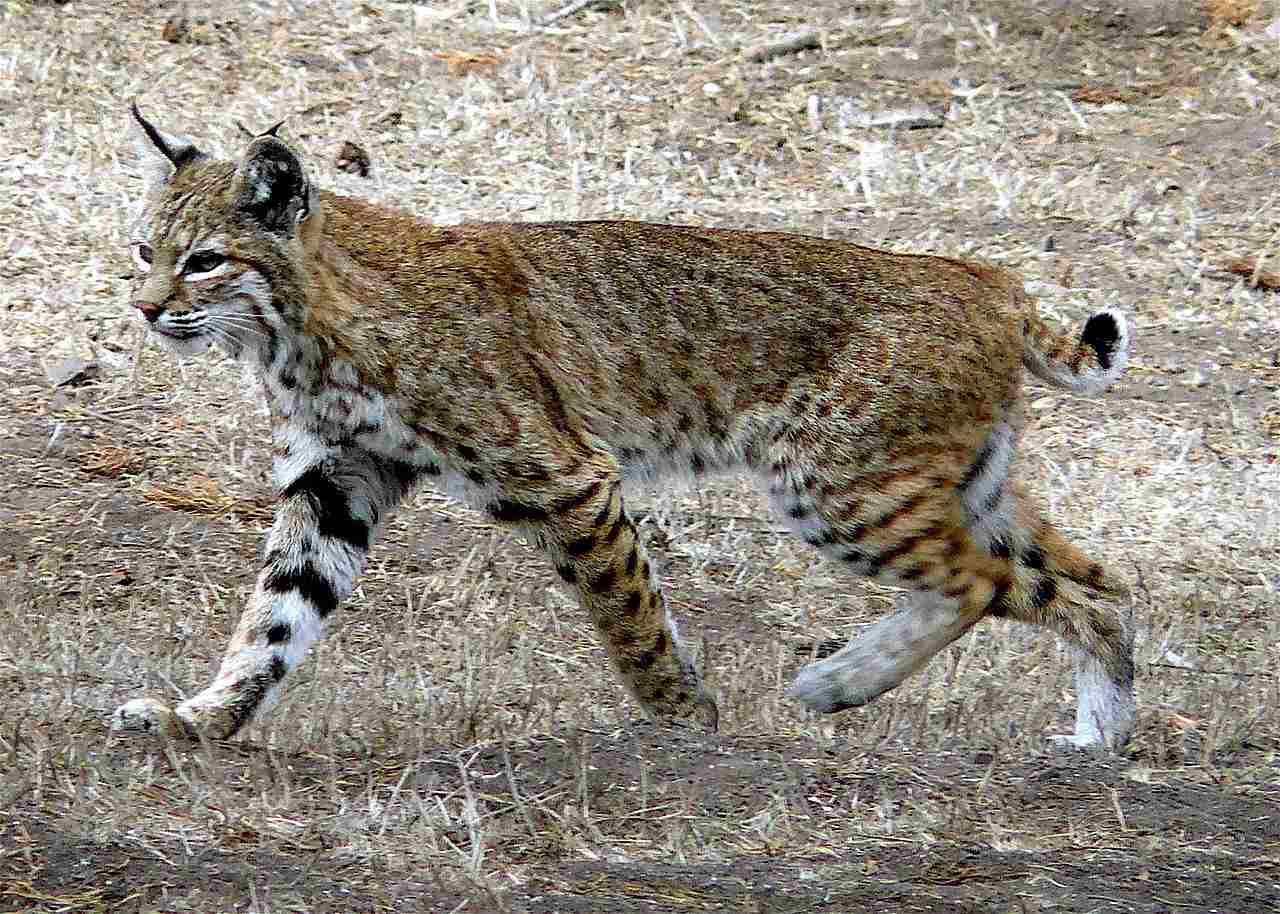
Bobcat:
Generally classified as a species of “Least Concern” due to stable populations and adaptability.
Domestic Cat:
Not formally classified; populations are abundant due to domestication and widespread distribution.
Comparison: Bobcats are monitored for conservation purposes, while domestic cats, as a widely domesticated species, do not have a specific conservation status.
Ecological Implications: Conservation status reflects the need for targeted efforts to protect wild species, while the abundance of domestic cats necessitates responsible pet ownership to prevent negative impacts on local ecosystems.
Summary of Comparison
Similarities:
Both belong to the family Felidae and share a carnivorous diet with similar modes of reproduction.
Both exhibit defensive strategies such as climbing to evade threats.
Differences:
Taxonomy:
Bobcats (Lynx rufus) belong to the genus Lynx, while domestic cats (Felis catus) belong to the genus Felis.
Appearance:
Bobcats have a rugged, wild appearance with tufted ears, while domestic cats exhibit diverse appearances influenced by selective breeding.
Size:
Bobcats are generally larger, averaging 26 to 41 inches, compared to domestic cats with varying sizes based on breed.
Weight:
Bobcats are generally heavier, weighing 15 to 35 pounds on average, while domestic cats vary by breed.
Bite Force:
Bobcats have a stronger bite force adapted for hunting larger prey.
Physical Offensive Advantages:
Bobcats have specialized adaptations for hunting larger prey, while domestic cats exhibit varied offensive features.
Physical Defensive Advantages:
Bobcats rely more on natural camouflage and agility, while both species share defensive strategies like climbing.
Speed:
Bobcats have a higher top speed (25 to 30 mph) compared to most domestic cat breeds.
Agility:
Both species display impressive agility, with bobcats adapted for navigating natural environments.
Overall Physical Capacity:
Bobcats generally have a more balanced and powerful overall physical capacity.
Habitat Preference(s):
Bobcats are adaptable to a wider range of habitats, while domestic cats have successfully adapted to human-inhabited areas.
Tracks:
Bobcat tracks are generally larger than domestic cat tracks.
Lifespan:
Domestic cats generally have longer lifespans than bobcats.
Mode of Feeding:
Bobcats primarily rely on hunting live prey, while domestic cats often consume commercially prepared food.
Social Behavior:
Bobcats are predominantly solitary, while domestic cats exhibit a broader range of social behaviors.
Mode of Reproduction:
Both species share a similar mode of reproduction, with females giving birth to live young.
Parental Behavior:
Bobcat mothers are typically more involved in raising their offspring, while domestic cat parenting behavior varies.
Proximity to Human-Inhabited Areas:
Bobcats generally maintain a distance from human settlements, while domestic cats have adapted to coexist with humans.
Behavior Toward Humans:
Bobcats are generally more wary of humans, while domestic cats often seek human companionship.
Danger Posed to Humans:
Bobcats may pose a threat if provoked, while domestic cats are generally not considered threatening to humans.
Associated Precautions:
Precautions for bobcats focus on minimizing interactions, while those for domestic cats involve responsible pet ownership.
Conservation Status:
Bobcats are monitored for conservation, while domestic cats, as a domesticated species, do not have a specific conservation status.
Conclusion:
I). Similarities:
Both belong to the family Felidae and share a common ancestry.
Carnivorous diet and similar modes of reproduction.
II). Differences:
Varying appearances, sizes, and weights.
Divergent habitat preferences and social behaviors.
Contrasting ecological implications, with bobcats playing a crucial role in wild ecosystems and domestic cats having a more diverse impact, including potential challenges for local wildlife.
